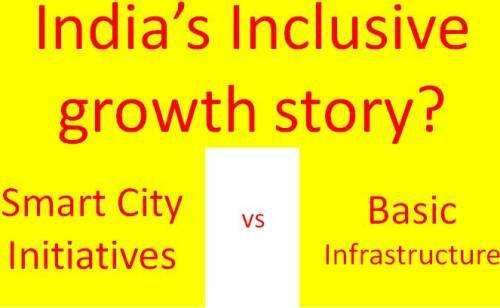Are Smart cities sustainable in the light of existing infrastructure
inadequate attention to public services and community services like roads, schools, hospitals, markets, continuous power, water supply systems will have adverse affects on well-being of the residents
I was speaking to a group of friends the other day, and arguing on priorities, speed and most important direction of the Indian governing machines.
The discussions see-sawed between basic infrastructure, the smart city initiative, and the necessity for India to raise the bar to be a “part” of the coveted group of nations in the light of global positioning.
Having said and discussed what we had to, a lot of thoughts came into mind, which after reading through various available resources and discussing a few concepts, I write these few lines.
The incumbent government has created a phenomenon of sorts, after announcing the Smart City initiative a couple of years ago, to bring Indian cities and the country in general at par with the global elite and making things safer and comfortable for the common man. However, it does not seem so.
Post the announcement, a large group of global solution providers are making a beeline for the administration with a plethora of smart products that claim to provide the best solutions – solutions that cover a wide domain including smart healthcare, smart metering, smart transportation, smart lighting, smart surveillance and such.
To note, that in the coming decade, over 10 crore Indians are expected to move to the cities. Cities that form the crux for economic development, but are ill-equipped to provide a satisfactory quality of life to most of its residents. Speaking of smart solutions in cities that are not equipped to provide a quality of life to most of its residents is a moot point. Where are the essentials that are required before even a single smart city module can be implemented.
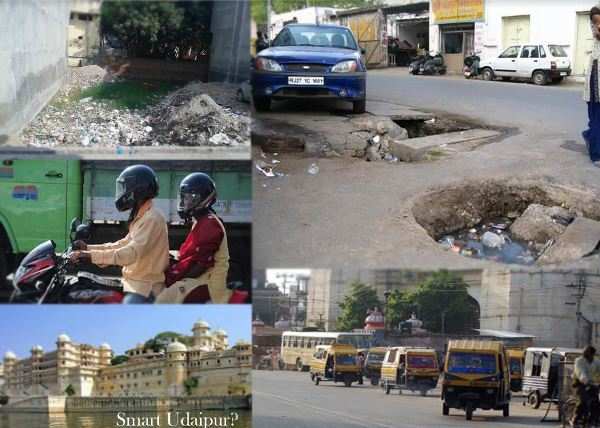
The goal of developing over 100 smart cities will need more than relevant technologies, given that basic governance and physical infra is lacking. Municipalities, local bodies and government, both state and central will have to focus on the basics first. Core infrastructure, viz. water supply, sewage, sanitation, waste management, power, roads, etc need to be upgraded.
A Smart City, by definition provides a self sustaining infrastructure. It permits effective and efficient utilization and management of resources. Energy, water, transportation, waste management, healthcare, security are the prime needs of the hour – for All residents of the city.
Udaipur’s senior residents, had some time ago, raised a point on the smart city initiative becoming a narrow channel of coordination and decision making. The city development of this scale entails community participation and cooperation. An open and collaborative system is called for. It will lead to transparency and easy open access to information and data. This will further lead to empowerment of the citizens, effective governance (e-governance) and finally economic growth. Ward meetings by the local Councilor should happen. The minutes of such meetings discussed at Municipality forums and consensus should be reached. This is participation.
There are certain core areas that must be focused on an developed, before the Smart Journey begins.
Energy, Water Management
High growth of the Indian economy and surging population has created surging energy demand. The Indian power system has grown from 1362MW to 250GW since independence. Deployment of smart grids, water management and distribution systems (specially with cities like Udaipur having in-premises reservoirs) are the need of the hour across the municipal areas as well as upcountry. Evaluation of energy consumptions, water consumption, affordable energy supply models (renewable and sustainable energy sources), economic relevance of social sectors, scarcity of material, population growth and ageing, etc are all interrelated and complex matrices that need to be understood and appreciated instead of being taken for granted. Integration of ICT in buildings, homes, hospitals, schools, etc will not be the only solutions. Basic needs of roof, water, clothing and food for the underprivileged sections of society and the remote areas need to be addressed. All this will come at a cost. But the cost is met from the exchequer. Hence prudent allocation of resources and mitigation of redundant projects need to be addressed. For eg. Roads across the city are being dug up multiple times – for widening, for laying 4G, for sewerage and then again for laying fibre…all of this can be synced to reduce the costs. Is the multiple cost being siphoned off to certain pockets?
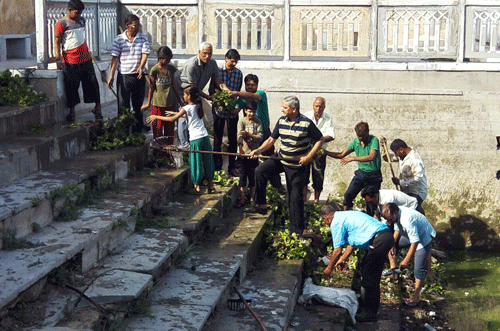
Transportation and Roads
Optimal transportation depending upon the size and ecosystem of the city enable it to increase productivity, employment, accessibility, investment opportunities and cultural interaction. Rapid urbanization is bringing about deteriorating air quality, choked traffic and an alarming increase in road accidents. This negatively impacts the efficiency a city is used to. A smart system will gather real time data from cameras on roads, manage traffic signals based on volume and reduce congestion. But this would need exemplary internet connectivity, a robust and active on road police force and educated commuters. Availability of online information will not help if there are no checks and balances. For eg. A group of CCTV cameras on a major crossing like Delhi Gate in Udaipur, for example will give information on signal jumping, seat belts, helmet non compliance, etc. but afterward, where the does the information lead. Is there live connectivity with the RTO to reach the defaulter and penalize him? Intelligent traffic management systems will use roadside sensors, cameras, automatic number plate recognition systems, wireless communication and big data to track and analyse. How will the control and efficiency be established? A smart power or water grid will use sensors to monitor water usage throughout the urban area…what about the remote areas, the villages, the farms, the rural population – where water is of the essence.
Disaster Management
Where integration of ICT to facilitate urban residents is being given primary importance, what about the rural folks. Is smart city more important or a fairly supported rural area. The devastating earthquake in Nepal in 2016 is a solid example of technology being rudely overpowered by nature. How safe will our smart cities be – against flood or earthquakes. 38 cities in India are known to be highly prone to earthquakes and 60% of the country’s entire landmass is prone to seismic activities. Blindly following global participation without adhering to basic needs and infrastructure stability will be disaster. Prediction of calamities will save lives and ensure that the city does not come to a stand still.
Eg. Panasonic has constructed Fujisawa Sustainable Smart Town (SST) in Japan. This city is constructed on one of the most active seismic zones on earth using earthquake resistant materials. FSST structures are equipped to consume less energy using solar panels on the roof and complementary cells for generating electricity for lighting and heating water. The city boasts of extensive emergency response systems by including community solar panels that the residents can use for electricity in case of an emergency. In the United States, the newly designed life guard stations for Coney Island, Staten Island, and Rockaway Beach run on photovoltaic and solar hot water heating. Are we equipped to meet such infrastructure?
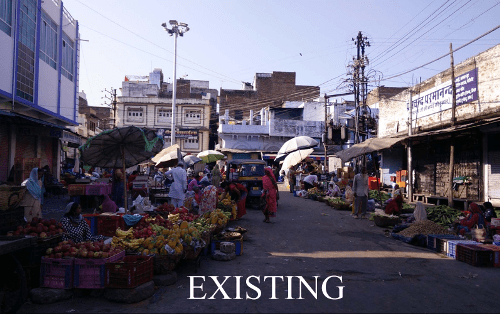
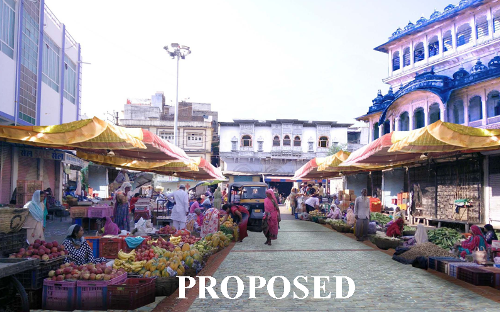
Integrating multiple IT solutions
Remote monitoring solutions and integrated IT infrastructure will provide the gist of efficiency in a smart city. Common platform data will homogenize the data formats for easy consumption, analyse and cross functional implementation of solutions and response time. For eg a local emergency vehicle can be accessed in case of an accident detected on the road. Access to video monitoring on the vehicle can help assess the damage and alert the medical supervisors take action. Today, in the upcoming smart cities, for eg. Udaipur, sometime patients are at the risk of losing their lives due to the unavailability of ambulance services nearer to their homes. This can be mitigated by smart solutions. Trash pick up, traffic lights control, flood, fire response can be effectively improved.
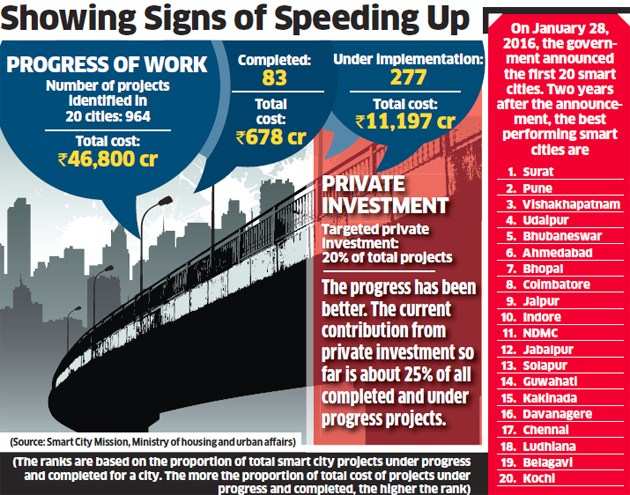
Public Privat Partnership
With small towns coming up as a result of speedy urbanization, population density is increasing. But inadequate attention to public services and community services like roads, schools, hospitals, markets, continuous power, water supply systems will have adverse affects on well-being of the residents.
Public-private partnerships, the government’s preferred model for smart city development and management, in order to serve the public interest as well as private interests, will require an effective and locally-accountable government partner. The govt therefore must play a role in strengthening the financial, administrative and technical capacities of municipal governments, and encourage states to devolve powers, not just responsibilities.
To join us on Facebook Click Here and Subscribe to UdaipurTimes Broadcast channels on GoogleNews | Telegram | Signal



